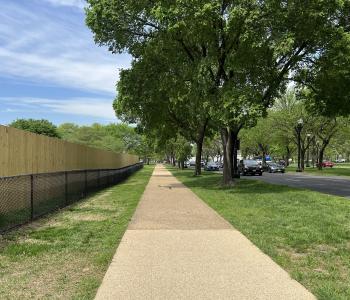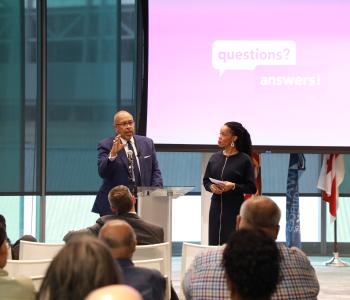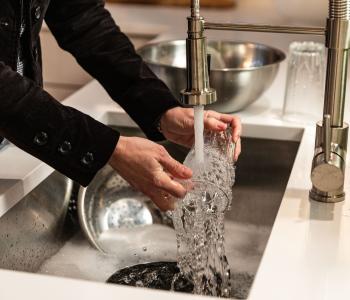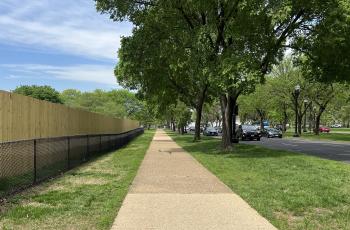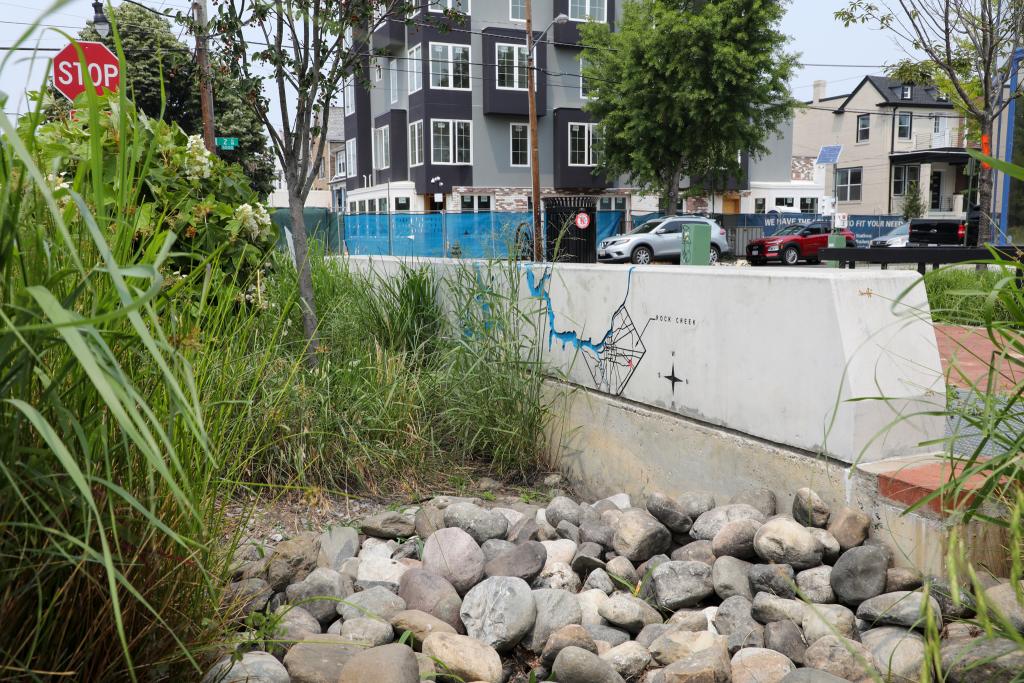Investigation continues after DC Waters December drinking water advisory
DC Water continues to investigate the source of a petroleum-type smell that resulted in a Do Not Drink advisory for DC Water customers in an isolated area of Northwest Washington from December 17 19, 2014. The source of the contamination remains unknown. DC Water and the Environmental Protection Agency (EPA) are in the process of analyzing water samples and reviewing information collected during the investigation. DC Water continues to monitor the drinking water system in the previously affected area. Customers are encouraged to contact the Drinking Water Division at 202-612-3440 with any information about the incident. Additional details about the investigation and answers to common questions about the incident are provided below. DC Water will share findings once we conclude the investigation, and we thank our customers for their patience and cooperation as we work to resolve this issue. The ongoing investigation includes the following actions: - Inspection of cross-connections in the affected area. Cross-connections are connections between the drinking water distribution system and water systems that may contaminate or pollute the drinking water distribution system. Cross-Connections include building and home water systems used for heating, cooling, or industrial purposes. DC Plumbing Code requires backflow preventers on all cross connections and the DC Water Cross-Connection Control Program oversees the installation and annual inspection of testable backflow preventers. To learn more about the program or to see examples of backflow preventers, visit our cross-connection webpage (link provided below). - Review of construction activity and utility work in the area. DC Water is investigating all activity in the area that could have resulted in the contamination of the drinking water system. - Survey of underground fuel storage tanks in the vicinity. DC Water is coordinating with the District Department of the Environment (DDOE) to identify and inspect storage tanks for leaks. To review information about DDOEs underground storage tank regulations, visit their website (link provided below). Summary of DC Water actions during the incident: - Collection and testing of water samples to monitor water quality in EPA laboratories. - Public Notice and distribution of a Do Not Drink advisory to protect public health. - Distribution of instructions for flushing premise plumbing. - Coordination with EPA, DDOE, and DC Homeland Security and Emergency Management Agency to mobilize resources and personnel during the incident. - Communication with customers through updates and fact sheets. - Deployment of water dispensing unit to distribute free water to affected customers. Please see the interactive map at http://bit.ly/WaterAdvisory to review the boundaries of the previously affected area. Customers with information about the incident or water quality questions should contact DC Waters Drinking Water Division at 202-612-3440 (Monday through Friday, 8 a.m. to 4:30 p.m.). All other inquiries should be directed to DC Water Customer Service at 202-354-3600 (Monday through Friday, 8 a.m. to 5 p.m.) or the 24-Hour Command Center at 202-612-3400. Information is also available at www.dcwater.com Frequently Asked Questions How can a contaminant of this type get into a water main? Although the drinking water distribution system is a highly pressurized closed system, the distribution system is connected to other pipe networks used for heating, cooling and other industrial processes. These connections are called cross-connections. DC Plumbing Code requires backflow preventers on all cross-connections that may pollute or contaminate the drinking water system. The Code also requires the annual inspection and maintenance of testable backflow preventers by a certified inspector. There may be rare instances when these backflow preventers do not work properly, which can result in an increased risk of contamination. What is DC Water doing to ensure that there is no longer any risk to the residents in the previously affected area? DC Water is continuing the forensics investigation into the source of the contamination. We are conducting additional water quality testing, installing pressure monitoring equipment to detect pressure loss incidents, and inspecting buildings for appropriate backflow protection against contamination. Could it happen again? Yes, but the probability of contamination of the drinking water system is low because the system is pressurized, meaning the water is always pushing outwards. Additionally, the presence of other safeguards, such as backflow preventers, minimizes the risk of contamination. While no water system is risk-free, the Washington metropolitan area has put a lot of thought, resources, and practice into making the systems and the water it delivers as safe as possible. DC Water regularly participates in planning exercises and coordinates with regulators and emergency response agencies to prepare for contamination scenarios. Review information about preparing for water emergencies on DC Waters website (link provided below). How did DC Water decide to issue and lift the advisory? DC Water received customer reports of a petroleum-type odor and conducted field testing with the DC National Guard Civil Support Team and the DC Fire Department. Tests indicated the possible presence of an unknown petrochemical. Based on this information, DC Water and the US Environmental Protection Agency determined that it was necessary to issue the Do Not Drink advisory during the investigation. DC Water sent samples to laboratories at the Washington Aqueduct and Ft. Meade for further analysis. Water samples were tested on Thursday morning after extensive flushing was performed in the distribution system in the affected area on Wednesday night. The distribution system was also flushed on Thursday evening. DC Water lifted the advisory after these test results confirmed that the drinking water met EPA drinking water standards and indicated that there was no longer any risk from contamination. What is the best way to stay informed about DC Water service disruptions that may affect customers? Customers can sign up for email or text alerts by entering contact information on DC Waters website at http://www.dcwater.com/news/alert_form.cfm. Although some alerts are sent to all customers, DC Water sends alerts to customers in specific locations during relevant repairs or emergency work. Customers are encouraged to follow us on Twitter and Facebook to review helpful information and frequent updates.

